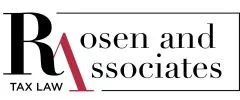The Supreme Court of Canada (“the SCC”) recently dismissed Glencore Canada Corporation's application for leave to appeal the FCA's 2024 decision (2024 FCA 3) which held that break fees received by the Appellant (Glencore) were properly taxable as income. Taxpayers must be attentive to the Federal Court of Appeal (“the FCA”)'s guidance on the tax classification of break fees when drafting break fee provisions to ensure that they (or their client's) obtain the desired tax treatment.
Case Facts
The Appellant's predecessor corporation was the potential acquirer in a Merger and Acquisition (M&A) transaction. The transaction fell through due to a competing offer, entitling the Appellant to a break fee payment. The Appellant did not include the amount received in their business income in their associated tax return and was subsequently reassessed by the CRA.
What are break/non-completion fees?
The FCA explained that, generally, the purpose of a break fee provision is to incentivize participation in a sale transaction by compensating prospective purchasers for the expended opportunity cost of an unsuccessful bid.
How are break fees taxed?
- As income, not as capital gains.
The FCA decision confirms that break fees are generally taxable as income and not as capital gains. Break fees generally do not give rise to a capital gain unless they are received as compensation for the disposition of property. In the M&A context, this would require a vested right to merge.
- Generally, as inducement payments.
Generally, most break fee provisions seek to incentivize a course of action, they are inducement payments which are taxable as income pursuant to s. 12(1)(x) of the Income Tax Act. The FCA decision clarifies that this characterization inquiry is largely dependent on the payor's motivation for offering a break fee – the motivation of the payee is largely irrelevant. For this reason, it is imperative that taxpayers thoroughly specify the commercial purpose of a break fee when drafting the contractual provision. For example, taxpayers must clearly label and differentiate between fees that are designed to disincentivize bad faith behaviour and fees designed to induce commitment into a tendering process.
- So long as they are received in the course of earning income from a business or property.
12(1)(x) only applies to amounts that were “received in the course of earning from a business or property”. However, the test for this is broader than the test for ordinary business income. This sets a relatively low threshold that will largely capture any payments incidental to business operations.
Conclusion
The SCC's decision to deny the Appellant taxpayer's application for leave to appeal signals to Canadian taxpayers that break fees are appropriately classified as inducement payments, which are taxable as income. However, whether a payment will be recognized as an inducement payment hinges on the manifest intent of the payor as expressed in the relevant contractual provisions. For this reason, taxpayers are well advised to precisely and faithfully document the commercial purpose motivating break fee payments.
The content of this article is intended to provide a general guide to the subject matter. Specialist advice should be sought about your specific circumstances.



